Environment and Ecology - 5 | Current Affairs & Hindu Analysis: Daily, Weekly & Monthly - UPSC PDF Download
| Table of contents |

|
| Olive Ridley Turtle |

|
| What is Rhisotope Project? |

|
| Pink Flamingos |

|
| Great Nicobar Project |

|
| SWM Cess on Waste Generators |

|
| Cheetahs in Gandhi Sagar Wildlife Sanctuary |

|
Olive Ridley Turtle
Why in News?
Recently, the traditional Chinese sky lantern festival has raised concerns among environmentalists and wildlife conservationists because it was planned near a nesting area for the endangered Olive Ridley turtles. Environmental advocates argue that the bamboo or metal wire frames of these lanterns take months to decompose, posing a significant threat to wildlife, including fish, dolphins, birds, and turtles.
What are Olive Ridley Turtles?
About: Olive Ridley turtles are carnivorous and are named for their olive-colored carapace. They are particularly noted for their unique mass nesting behavior known as Arribada, where thousands of females gather on the same beach to lay their eggs.
Habitat: These turtles inhabit the warm waters of the Pacific, Atlantic, and Indian Oceans. The Gahirmatha Marine Sanctuary in Odisha is recognized as the world's largest rookery for sea turtles.

Protection Status:
- Wildlife Protection Act, 1972: Schedule 1
- IUCN Red List: Vulnerable
- CITES: Appendix I
Initiatives to Protect Olive Ridley Turtles:
- Operation Olivia: This initiative, launched by the Indian Coast Guard in the early 1980s, focuses on the protection of Olive Ridley turtles during their breeding and nesting period along the Odisha coast from November to December. It also aims to prevent illegal trawling activities.
- Mandatory use of Turtle Excluder Devices (TEDs): The Odisha government has mandated the use of Turtle Excluder Devices in trawling to minimize accidental turtle deaths. TEDs are specially designed nets that allow turtles to escape while retaining the catch.
- Tagging: Scientists tag Olive Ridley turtles with non-corrosive metal tags to track their movements and understand their migratory patterns, which is crucial for their conservation.
What are the Threats Faced by Olive Ridley Turtles?
- Coastal development projects, such as the construction of seawalls, resorts, and ports, threaten to destroy nesting beaches and diminish foraging grounds for Olive Ridley turtles.
- Turtles often get accidentally caught in fishing gear, including gillnets, trawls, and longlines, which can lead to injury or death.
- Predators such as raccoons, crabs, birds, and foxes can raid Olive Ridley nests, consuming the eggs and impacting population growth.
- Rising ocean temperatures may disrupt the sex ratios of hatchlings, resulting in a higher number of females than males.
- Olive Ridley turtles often mistake plastic bags for jellyfish, which they typically eat. Ingesting plastic can cause blockages and starvation.
- Artificial lights from nearby towns and industries can mislead hatchlings, causing them to head away from the sea towards urban areas instead.
What is Rhisotope Project?
Why in news?
Recently, South African scientists injected radioactive material into live rhinoceros horns under the Rhisotope Project to curb poaching.
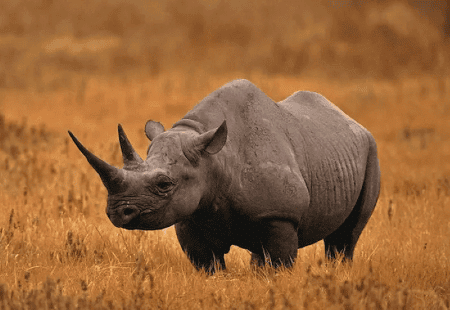
About Rhisotope Project:
- The Rhisotope Project was initiated in 2021 in South Africa.
- The primary goal is to make rhinoceros horns easier to detect at border check-points and to make them ineffective for human consumption.
- The project involves the insertion of two small radioactive chips into the horns of 20 rhinos.
- The implanted low-dose radioactive material is designed to be detected by radiation sensors at international borders without causing harm to the animals or the environment.
- This radioactive material is anticipated to last for five years on the horn, offering a more economical alternative compared to the current practice of dehorning every 18 months.
- Additionally, the research team applied 11,000 microdots on each treated horn to aid in further identification.
- Follow-up blood samples will be collected by the scientists to ensure the effective protection of the rhinoceroses.
- South Africa, which hosts the majority of the world's rhinos, continues to face a poaching crisis largely driven by demand from Asia, where rhino horns are utilized in traditional medicine.
Pink Flamingos
Why in News?
Recently, climate change has impacted water levels and salinity at Tanzania's Lake Natron, which is home to numerous pink flamingos. This alteration is making nesting increasingly challenging and is contributing to a decline in their population due to severe weather conditions and human encroachment.

What are the Key Facts About Flamingos?
- About: Flamingos belong to the family Phoenicopteridae. There are six recognized species of flamingos, including the Greater Flamingo (the state bird of Gujarat), Chilean Flamingo, Lesser Flamingo, Caribbean Flamingo, Andean Flamingo, and Puna Flamingo. These species inhabit various environments such as lakes, mudflats, and shallow lagoons across the Americas, Africa, Asia, and Europe.
- Distinctive Appearance: Flamingos are renowned for their striking pink feathers. They have long legs and necks, webbed feet, and a unique downward-curving bill that is specifically adapted for filter-feeding. Their coloration can vary based on their diet and habitat, with hues ranging from dark or bright pink to orange, red, or even pure white.
- Adaptations: These birds have developed specific adaptations to thrive in extreme environments characterized by high salinity and temperature, where their natural predators are few.
- Ecological Role: Flamingos play a vital role in their ecosystems. Their feeding activities help maintain the health of their habitats, influencing nutrient cycling and the populations of algae.
Conservation Status:
- IUCN Red List: The conservation status of flamingos varies by species. The Andean Flamingo is classified as Vulnerable, while the Lesser Flamingo, Puna Flamingo, and Chilean Flamingo are considered Near Threatened.
- CITES: Flamingos are listed under Appendix II of the Convention on International Trade in Endangered Species (CITES), which regulates their trade to ensure their survival.
- Wildlife Protection Act, 1972: In India, flamingos are protected under Schedule II of the Wildlife Protection Act of 1972, which provides legal safeguards against hunting and habitat destruction.
Great Nicobar Project
Why in news?
On August 25, 2024, the Ministry of Environment confirmed that the Great Nicobar Project will not displace or harm indigenous tribes, stating that proper consultations with tribal councils have been conducted.
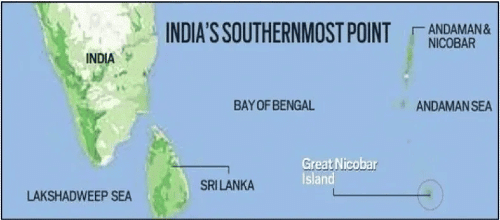
Overview:
- The Great Nicobar Project is a comprehensive development initiative aimed at enhancing the infrastructure and strategic presence of India on Great Nicobar Island, the southernmost island of the Andaman and Nicobar Islands.
- This project received clearance from the Ministry of Environment in November 2022 and spans over a planned timeframe of 30 years.
Key objectives:
- Strategic importance: The project aims to counteract the expansionist activities of neighboring nations, especially China, and to protect India’s maritime interests by addressing illegal activities like poaching by fishermen from Myanmar.
- Infrastructure development: Valued at ₹72,000 crore, the project includes the construction of an international container trans-shipment terminal, a greenfield international airport serving both military and civilian purposes, township development, and a 450 MVA power plant utilizing gas and solar energy.
Geographical context:
- Location: Great Nicobar Island is situated at the southern tip of the Andaman and Nicobar group, separated from the Andaman Islands by the Ten Degree Channel. It is also home to Indira Point, which is India's southernmost point, located less than 150 km from Indonesia.
- Ecosystem: The island features tropical wet evergreen forests, mountain ranges reaching up to 650 meters, and coastal plains. It contains two national parks and a biosphere reserve that supports endangered species, including the leatherback sea turtle.
Impact on Indigenous Tribes:
- Tribal population: The island is inhabited by the Shompen, a hunter-gatherer tribe, as well as the Nicobarese. There are approximately 237 Shompen and 1,094 Nicobarese living within a tribal reserve of 751 sq. km, of which 84 sq. km is proposed for denotification for the project.
Environmental and seismic considerations
- Deforestation: The project is projected to divert around 13,075 hectares of forest land, approximately 15% of the island’s total area, leading to the felling of nearly 9.64 lakh trees.
- Seismic risks: The region is seismically active, having experienced a significant earthquake (9.2 on the Richter scale) in 2004. Experts predict that a similar major quake may not occur for another 400-750 years, though smaller tremors are expected. The project will comply with the National Building Code to ensure earthquake-resistant structures.
SWM Cess on Waste Generators
Why in news?
Recently, Bengaluru has proposed to increase the Solid Waste Management (SWM) Cess to Rs. 100 per month for each household to address the significant financial strain associated with SWM operations. Currently, Urban Local Bodies (ULBs) typically charge around Rs. 30-50 per month for these services, often collected alongside property tax.
What is SWM Cess?
- About: The Solid Waste Management (SWM) cess is a user fee charged by Urban Local Bodies (ULBs) in India. It serves as a tax or levy imposed by the government to support specific services, including waste management and infrastructure development.
- Legal Provisions: Under the Solid Waste Management Rules, 2016, ULBs are mandated to collect user fees or cess for SWM services. The proposed fee increase is a response to the rising costs and challenges faced by ULBs in effectively managing solid waste.
What are Solid Waste Management Rules 2016?
- The SWM Rules 2016 replaced the Municipal Solid Wastes (Management and Handling) Rules, 2000.
- These rules emphasize the segregation of waste at its source and hold manufacturers responsible for the disposal of sanitary and packaging waste. They also mandate user fees for collection, disposal, and processing from bulk generators.
Key Features:
- Waste Segregation & Disposal: Residents are required to separate waste into wet (biodegradable), dry (recyclable), and hazardous categories. Segregated waste is to be handed over to authorized collectors or local bodies.
- Payments: Residents must pay for waste collection services and may face fines for failing to segregate their waste properly.
- Waste Processing: The SWM Rules encourage composting or bio-methanation of biodegradable waste wherever feasible. The rules also cover landfills, waste-to-energy plants, and special handling requirements for hilly areas.
- Local Authority Duties: Municipalities are responsible for collecting segregated waste, ensuring proper processing and disposal, and charging user fees to recover costs.
- Extended Producer Responsibility: Manufacturers of disposable products (packaging) share the responsibility for waste collection and financially support waste management systems.
What is the Rationale Behind Increasing SWM Cess Collection?
- High Costs of SWM Services: The SWM process is complex and resource-intensive, consuming up to 50% of ULBs' annual budgets. Costs include capital investments and operational expenses such as salaries, waste collection, and management plant operations.
- Revenue Challenges: Despite high expenditures on SWM, revenue generation from these services is minimal. For instance, Bengaluru spends about Rs 1,643 crore annually on SWM services, while the revenue from these services, excluding grants, is nearly negligible at Rs. 20 lakh per year.
- Limited Recyclability: Only 1-2% of dry waste is recyclable, with most of it being non-recyclable and non-biodegradable, leading to low revenue from recycling efforts and further straining ULB finances.
- Operational Challenges: Effective waste segregation at the source is often lacking, complicating waste processing. Furthermore, there is a limited market for finished products from waste processing, making it financially unviable.
- Disposal Costs: The disposal of non-compostable and non-recyclable dry waste incurs significant costs, particularly due to transportation expenses, as proper waste disposal facilities are often located far from urban centers.
What Measures Can Be Taken to Reduce Operational Expenditure on SWM Services?
- Waste Segregation at Source: Enhancing waste segregation at the household level can improve the yield from composting operations and boost the recycling of dry waste, thereby lowering operational costs.
- Reducing Single-use Plastic: The widespread use of non-recyclable single-use plastics increases transportation and disposal costs for ULBs. Reducing reliance on such plastics can help decrease operating expenses.
- Decentralised Composting: Establishing Micro Composting Centers (MCCs) at the ward level, as implemented in Tamil Nadu and Kerala, can facilitate local processing of wet waste and reduce transportation costs.
- Self-Waste Processing by Bulk Waste Generators: Encouraging large institutions to set up in-house waste processing facilities can alleviate pressure on ULBs and promote cleaner premises.
- Information, Education, and Awareness (IEC): Effective IEC campaigns can discourage open littering. Raising awareness about proper waste disposal can reduce the labor needed for road sweeping and drain clearing, allowing for better resource allocation to waste processing and recovery.
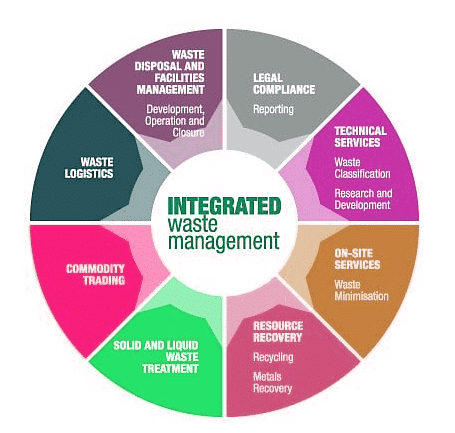
Cheetahs in Gandhi Sagar Wildlife Sanctuary
Why in news?
Recently, the Madhya Pradesh Government announced the completion of preparations for the reintroduction of cheetahs from Africa into the Gandhi Sagar Wildlife Sanctuary (GSWS). This initiative marks the second habitat for cheetahs in India, following Kuno National Park (KNP).
What are Key Facts About Gandhi Sagar Wildlife Sanctuary?
- Location: Established in 1974, the sanctuary spans the districts of Mandsaur and Neemuch in western Madhya Pradesh, adjacent to Rajasthan. The Chambal River divides the sanctuary into two nearly equal sections, with the Gandhi Sagar Dam situated within its boundaries.
- Ecosystem: The sanctuary features a unique ecosystem characterized by rocky terrain and shallow topsoil, supporting a savanna ecosystem. This includes open grasslands dotted with dry deciduous trees and shrubs, while the river valleys are lush and evergreen.
- Ideal Habitat for Cheetahs: The sanctuary's environment bears resemblance to the Maasai Mara in Kenya, famous for its savanna wilderness and diverse wildlife, making it suitable for cheetahs.
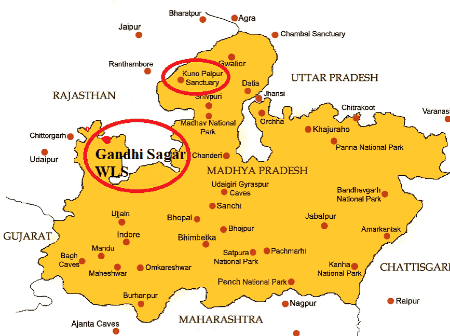
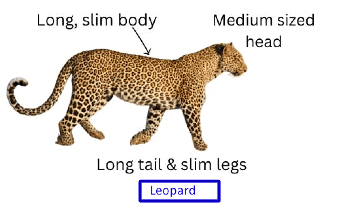
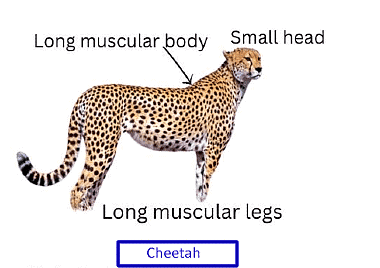
What are the Challenges in Making Gandhi Sagar a Viable Cheetah Habitat?
- Insufficient Prey Base: The current population of prey animals such as chital, blackbuck, and chinkara is inadequate for sustaining cheetahs. A minimum of 350 ungulates is necessary to support a single coalition of cheetahs.
- Change of Habitat: Cheetahs relocated from Kenya may develop thicker fur to cope with the African winter, which can be uncomfortable in India's warmer climate. This adaptation period may hinder their adjustment to the new environment.
- Proximity to Human Habitation: Unlike Kuno, Gandhi Sagar is situated near highways and human settlements, posing potential challenges for the cheetah population due to increased human-wildlife interaction.
- Vulnerability to Infection: The decision to translocate cheetahs will be finalized after the monsoon season, as the animals could be more susceptible to infections during this time.
|
53 videos|5389 docs|1140 tests
|
FAQs on Environment and Ecology - 5 - Current Affairs & Hindu Analysis: Daily, Weekly & Monthly - UPSC
| 1. What is the Rhisotope Project? |  |
| 2. What is radioactivity? |  |
| 3. What are some key facts about Flamingos? |  |
| 4. What is the conservation status of Flamingos? |  |
| 5. What are the key objectives of the Great Nicobar Project? |  |















